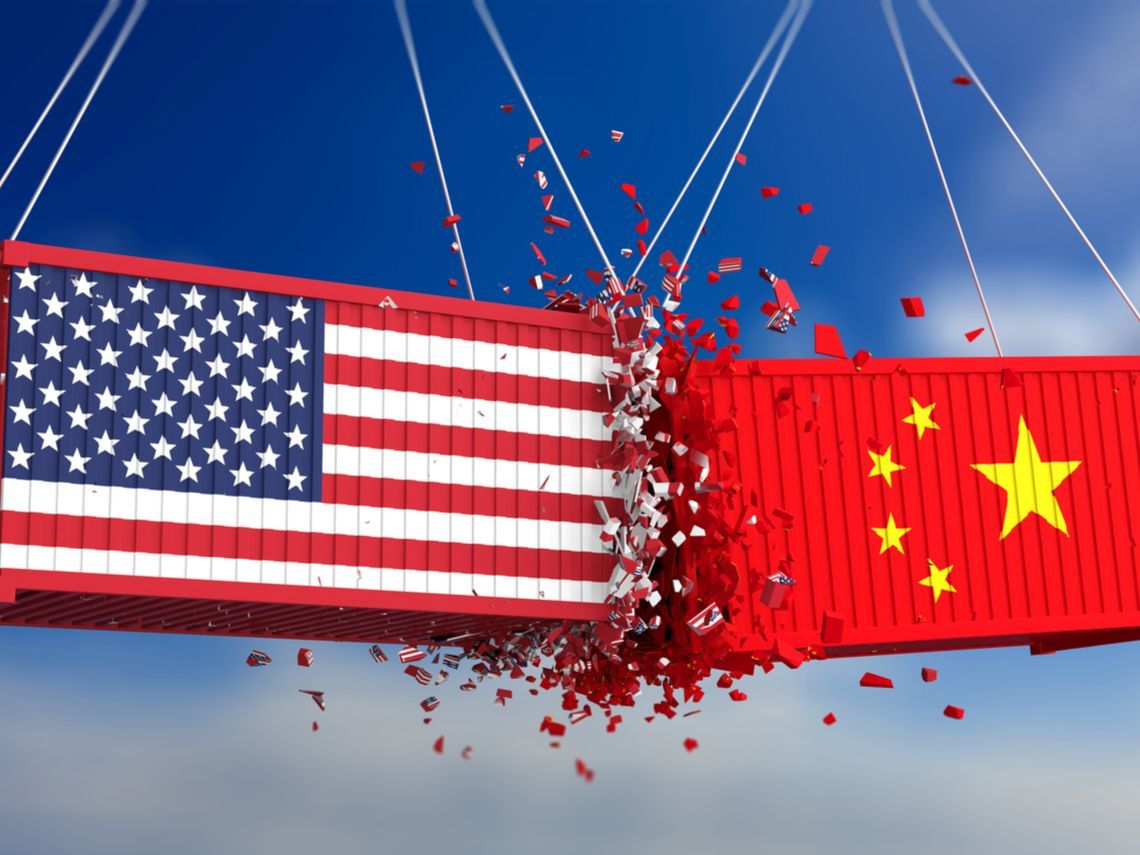If China’s Foreign Trade Is Predatory in Nature, then Why Is the U.S. the Only Victim?
- Caifu Magazine | by Star
- EN
U.S. President Donald Trump still believes that promoting a trade war with China is to his political advantage, so he is accelerating related preparations. Trump announced in June 2018 that tariffs would be imposed on Chinese exports worth $50 billion USD starting July 6, 2018. China immediately retaliated, imposing a series of tariffs on U.S. goods worth $50 billion USD. This trade war will go ahead without negotiation because the United States and China have great differences on the basic concept of this issue. Both sides have reason to believe they can win.

The United States and China have different explanations in two ways, so it is impossible for them to reach an agreement. First, President Trump believes that the core issue of Sino-U.S. relations can be measured by the huge U.S. trade deficit with China. However, China believes that bilateral trade has historically been unbalanced, especially among countries with vastly different savings rates. Second, it is the bipartisan common consensus that the United States is a market economy that operates in accordance with the rules of free trade, while China is a non-market economy that unfairly competes based on the government's massive subsidies to its industries. Instead, China insists that it has complied with global multilateral trade rules formulated and enforced by the World Trade Organization (WTO). China claims the United States violates the rules, as President Trump now imposes unilateral tariffs outside the WTO framework. In these two areas of disagreement, the argument by the Chinese side is more convincing.
The U.S. trade deficit with China is indeed huge. In 2017, China exported about $506 billion USD worth of goods to the United States, but only imported about $130 billion USD worth of goods, resulting in a trade surplus of more than $375 billion USD with the United States. President Trump has blamed this on China's policies, while China believed that it was the United States’s fault. It is easy to prove that China is right, given the fact that other major trading countries do not have a huge deficit with China. If China is a trading nation with a predatory nature, then most countries should have a trade deficit with China. However, among the eight major exporting economies next to China, only the United States, France and the United Kingdom have a trade deficit with China. The latter two have relatively small deficits because China is not their major trading partner. Japan’s trade with China is roughly balanced, while all other countries, including Germany, South Korea, the Netherlands and Italy, enjoy trade surpluses with China. If China’s trade practices are widely predatory, then why is the United States the only major victim?
Chinese sources claim that the trade deficit is mainly caused by the low savings rate in the United States, as well as large-scale public and private lending, which have attracted foreign capital to fill the funding gap. In essence, China and other countries with large trade surpluses with the United States are lending money to the United States to allow it to purchase their exports. Should Americans increase their savings or reduce their borrowing, or if the federal government is prepared to achieve a balanced budget, then China’s trade surplus will fall. However, U.S. policy direction has further aggravated the problem. For example, large-scale tax cuts for enterprises and the rich in fall 2017 caused explosive growth in borrowing. In addition to the Chinese, many American economists also support this view, because it fits basic macroeconomic theory.
American commentators of different political positions in the political spectrum claim that China is the root cause because excessive government intervention gives companies an unfair advantage. A senior official in the Trump administration explained: "We have two systems. These two systems should have merged with each other after China joined the WTO in 2001 to form two market economies. However, China turned out to be even a larger non-market economy. Such structural difference threatens the United States’s economic prosperity and national security.” This statement is wrong in two aspects: China is already striding toward a market-driven economy, while private monopoly power in the United States has increased. In fact, the United States is far from a model of a free market economy as it has publicized itself.
Contrary to popular belief, in many ways China treats private companies friendlier than the United States. For example, small businesses enjoy more freedom for expansion in China, while in the United States increasingly larger corporate giants have expelled or merged smaller competitors. When Chinese companies competes overseas with countless foreign counterparts enjoying high-efficiency and low-cost sales, leading industries in the United States are increasingly driven by rent-seeking behavior and gain from high-priced products under the protection of intellectual property rights. This is actually a euphemism for achieving legal monopoly through patent, trademark and copyright protection. The software, internet, pharmaceutical, entertainment and high-tech companies in the United States rely on mandatory monopolies to guarantee their high prices. They employ relatively few ordinary workers, but employ large number of highly trained and well-paid engineers, lawyers, designers and managers to develop high-margin products and marketing strategies. The United States is a post-free market economy in the form of post-industrial leasing style, while China, its competitor, is a kind of Chinese-style industrial capitalism. They are different systems, but their difference is not the same as the traditional description.
I never deny that the Chinese government has indeed funded the development of certain industries, especially since it provides low-cost infrastructure and subsidized research. However, all major countries have done so. Thanks to the research funded by the military, the United States has taken the lead in launching several high-tech industries. These research efforts have developed the internet, GPS, and many other information technologies that have transformed businesses in the 21st century. The U.S. government continues to fund research directly through its leading research universities. Similarly, one major part of China’s commercial subsidies is used for its expanding higher education system, and its enrollment has now surpassed the United States. Some Americans who advocate budget cuts have cut government support for education and research, and they demand that China to follow suit. However, in this regard, I would hope that the United States imitate China. In the past, the United States has made huge gains by funding knowledge creation. It is short-sighted to abandon this source of power and unreasonable to require other countries to follow suit.
Another reason can explain why it is ridiculous to label China as non-market economy. About 60 percent of China’s exports come from international companies, including many U.S. companies, which are usually not the main recipients of Chinese government subsidies. Most of the remaining exports come from small- and medium-sized private enterprises in China. No rational observers will call them non-market. The most protected Chinese companies are actually not the main exporters, but those that are vital to national security, including communications companies. China does not intend to open its doors to foreign political interference. The United States and other countries have recently suffered from Russian intervention.
China cannot and won’t meet President Trump's trade requirements, especially given the fact that many of such requirements are based on hypocrisy and fallacies. In addition, China's economic power is at least as dispersed as the United States. For many of President Trump's general requirements, the Chinese central government is not capable of satisfy them. Instead of providing an opportunity to negotiate for compromise, President Trump has instead threatened to substantially increase tariffs. If tariffs are further imposed for two times on Chinese exports worth of $200 billion USD and $200 billion USD respectively, the scope of taxation will cover almost all imported products from China. President Trump is unlikely to stop unless the political pressure in the United States forces him to do so.















